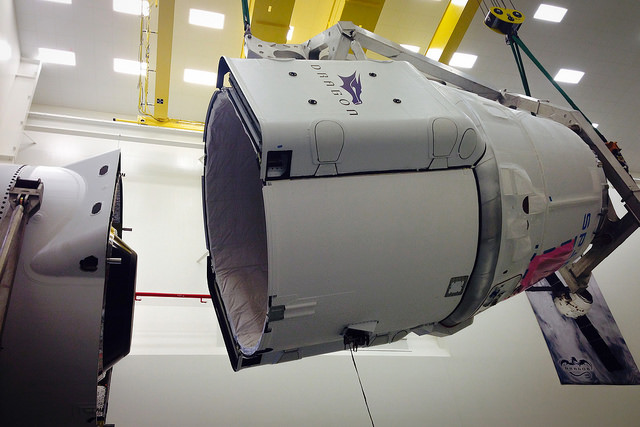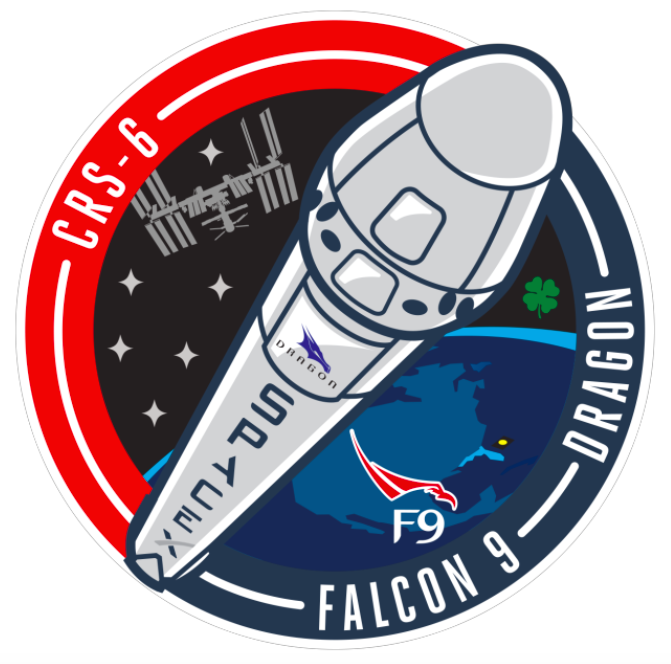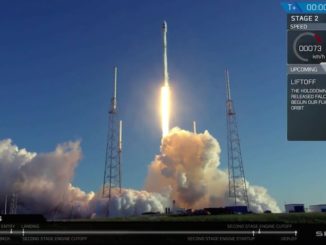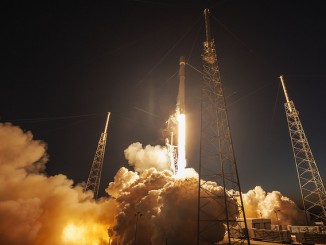
Weather forecasters will be on the lookout for rain showers and thunderstorms during Monday’s scheduled launch of a SpaceX cargo craft to the International Space Station, but there is a 60 percent chance conditions at Cape Canaveral will permit liftoff.
SpaceX ground crews have mated the Falcon 9 rocket with its Dragon capsule payload ahead of a customary preflight engine test Saturday.
The launch team will fuel the 208-foot-tall Falcon 9 rocket with refined kerosene and liquid oxygen, run through countdown procedures and ignite the booster’s nine Merlin 1D main engines Saturday. Engineers will crunch data from the static fire test before giving the green light to press on with launch Monday.
Liftoff Monday is set for 4:33:14 p.m. EDT (2033 GMT) from Cape Canaveral’s Complex 40 launch pad. Launch is perfectly timed for the Falcon 9 rocket to pivot northeast from Florida’s Space Coast in pursuit of the space station.
The weather forecast calls for a mostly cloudy sky and isolated rain showers during Monday’s instantaneous launch opportunity. Meteorologists expect a cold front to bring inclement weather to Central Florida over the weekend.
“The frontal boundary begins to dissipate over Central Florida on Monday, but there is a threat of rain showers, thick cloud coverage and anvils drifting towards the coast from inland storms,” forecasters from the U.S. Air Force’s 45th Weather Squadron wrote. “Maximum upper-level winds are from the northwest at 55 knots near 45,000 feet.”
Forecasters predict a few clouds at 3,000 feet, scattered clouds at 14,000 feet and a broken cloud deck at 28,000 feet. Winds should be out of the southeast at 12 to 17 mph.
If the launch is delayed to Tuesday, conditions should improve. There is a 70 percent chance of acceptable weather for Tuesday’s launch attempt at 4:10 p.m. EDT (1610 GMT).

The rocket will deploy the Dragon capsule in orbit 10 minutes after liftoff, beginning the craft’s two-day automated pursuit of the orbiting research lab and its six-person crew. Assuming launch occurs on time Monday, astronaut Samantha Cristoforetti will unlimber the space station’s robotic arm and grapple the free-flying Dragon spaceship Wednesday at approximately 7 a.m. EDT (1100 GMT).
The delivery of 4,387 pounds of supplies, provisions and experiments is the main purpose of Monday’s launch, but SpaceX plans another try to recover the Falcon 9 rocket’s first stage booster intact.
If successful, the achievement would mark a major step toward SpaceX’s goal of turning the Falcon 9 into a partially reusable launcher, which the company says would slash the cost of transporting payloads into space.
Just as the cargo-carrying Dragon capsule enters orbit, the Falcon 9’s 14-story first stage booster will attempt to stick a landing on SpaceX’s rocket recovery barge in the Atlantic Ocean.
Stationed about 200 miles northeast of Cape Canaveral, the barge is emblazoned with a bullseye and equipped with underwater thrusters to maintain position for the rocket’s descent.
The first stage will fire a subset of its nine booster engines for three maneuvers after jettisoning from the Falcon 9’s upper stage about three minutes after liftoff. The burns will guide the 12-foot-diameter rocket toward the landing zone in the Atlantic Ocean.
Four stabilizing fins will pop open during descent, and the rocket will target a vertical rocket-assisted touchdown on the remote-controlled barge, or autonomous spaceport drone ship, as SpaceX calls it.
The landing experiment will mark the second time SpaceX has tried the maneuver with the drone ship. A Falcon 9 booster reached the barge after a successful descent during a launch in January, but the rocket’s four grid fins ran out of hydraulic fluid, causing the stage to land on a tilt and disintegrate in a fireball.
Engineers fixed the problem by loading extra hydraulic fluid into future launchers.
Follow Stephen Clark on Twitter: @StephenClark1.



